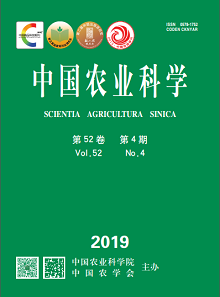【Objective】In order to improve crop yield and soil fertility for rotation of winter wheat and summer maize in North China Plain, it is necessary to study the effects of long-term additional application of manure and straw incorporation on crop yield, soil carbon and nitrogen stocks. 【Method】 Taking the key experimental station on ecological environment of Drab Fluvo-aquic soil in Changping, Ministry of Agriculture as the research platform, two application histories (11 years and 27 years) and four application treatments (NPK, chemical fertilizers; NPKM, NPK+22.5 t·hm -2manure; NPKM+, NPK+33.75 t·hm -2 manure; NPKS, NPK+ straw) were conducted, and yield of winter wheat and summer maize as well as soil carbon and nitrogen stocks were analyzed. 【Result】Results showed that long-term additional application of manure or straw could increase crop yield. Compared with NPK, the yield of wheat and maize could be increased by 18.6%, 15.8%, 3.5% and 39%, 42%, 35% under NPKM, NPKM+ and NPKS, respectively, after 11 years. Meanwhile, yield of wheat and maize could be increased by 41%, 51.5%, 23% and 31%, 33%, 58% under NPKM, NPKM+ and NPKS, respectively, relative to NPK after 27 years. Soil organic carbon (SOC) and total nitrogen (TN) were increased after manure and straw added with the time prolonged. Specifically, stocks of soil carbon and nitrogen were 25-114 Mg·hm -2 and 2.2-9.0 Mg·hm -2, respectively, after 10 years, which were 29-146 Mg·hm -2, 2.5-12.1 Mg·hm -2, respectively, after 27 years. Both SOC and TN stocks presented the same trend which increased firstly and then decreased with the increasing of soil depth, reaching a peak at 80 cm. Peaks of SOC and TN pools were 102, 128, 146, 123 Mg·hm -2 and 8.3, 9.7, 12.1, 9.1 Mg·hm -2 for NPK, NPKM, NPKM+ and NPKS, respectively, after 27 years. However, no significant difference was observed under these treatments after 10 years (P>0.05). Soil ratios of C to N were reduced in different soil layers after two application histories with different organic material application, and soil C/N was obtained stability with the prolonged of fertilization years. Both SOC and TN stocks presented increasing trends with time. Compared with NPK, the accumulation stocks of SOC and TN could increase 5.2%, 11.2%, 9.2% and 21.2%, 26.6%, 38.8% under NPKM, NPKM+ and NPKS, respectively, after 11 years, which could increase 26.3%, 41.1%, 21.8% and 26.2%, 44.9%, 4.0% under NPKM, NPKM+, and NPKS, respectively, after 27 years. For a longer time, additional application of manure was better than straw for promoting SOC accumulation, while it was opposite for TN accumulation.【Conclusion】Based on the conventional fertilization, long-term additional application of manure or straw could increase crop yield, SOC and TN stocks thus promoted soil fertility. A great impact was observed with fertilization years added. In addition, application of manure had a more remarkable effect than straw incorporation, especially for a much long time, but on the contrary for accumulation stocks of TN.









